The life of Prince Philip, Duke of Edinburgh
- Published
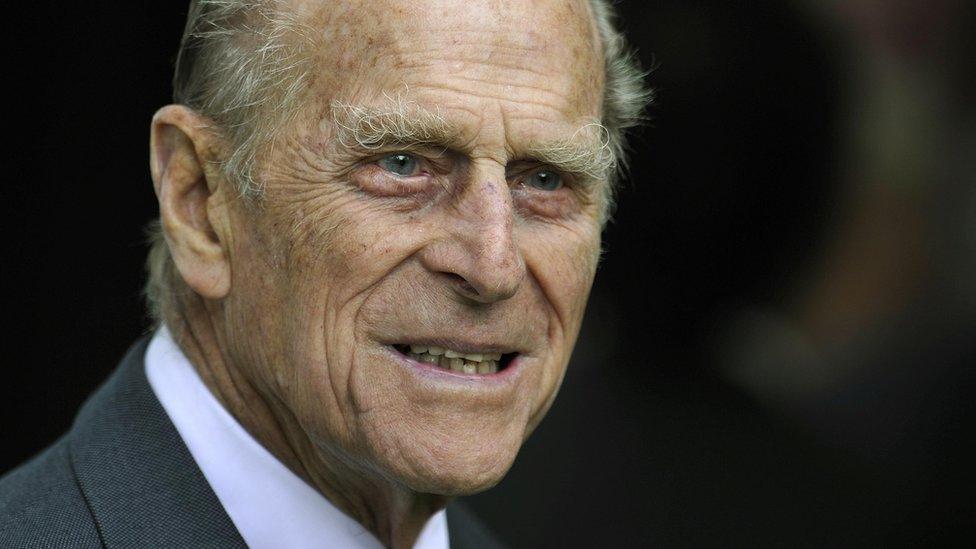
Prince Philip, the Duke of Edinburgh and the Queen's husband, has died.
Buckingham Palace released a statement saying he "passed away peacefully" at Windsor Castle on Friday morning.
The 99-year-old had recently spent time in hospital after a special medical procedure for a pre-existing heart condition.
Buckingham Palace's statement said: "It is with deep sorrow that Her Majesty The Queen announces the death of her beloved husband, His Royal Highness The Prince Philip, Duke of Edinburgh.
"His Royal Highness passed away peacefully this morning at Windsor Castle.
"Further announcements will be made in due course.
"The Royal Family join with people around the world in mourning his loss."
WATCH: Newsround's special bulletin looking back on the life and achievements of Prince Philip
The Queen's consort

Prince Philip spent most of his life at the Queen's side.
As her husband, he wasn't the king, but he had a special job title - consort - and his role was to support her through good times and bad.
He holds the record for the longest-serving consort in British history.
On their diamond wedding anniversary in 2007, the Queen described Prince Philip as her "strength and stay".
A European prince
Prince Philip was born in 1921 on the Greek island of Corfu.
His family were royals, but they were banished from Greece when Philip was just one year old, so he spent his childhood in France, Germany and then here in Britain.
He went to Gordonstoun School in Scotland, where he eventually became head of school and captain of both the cricket and hockey teams.
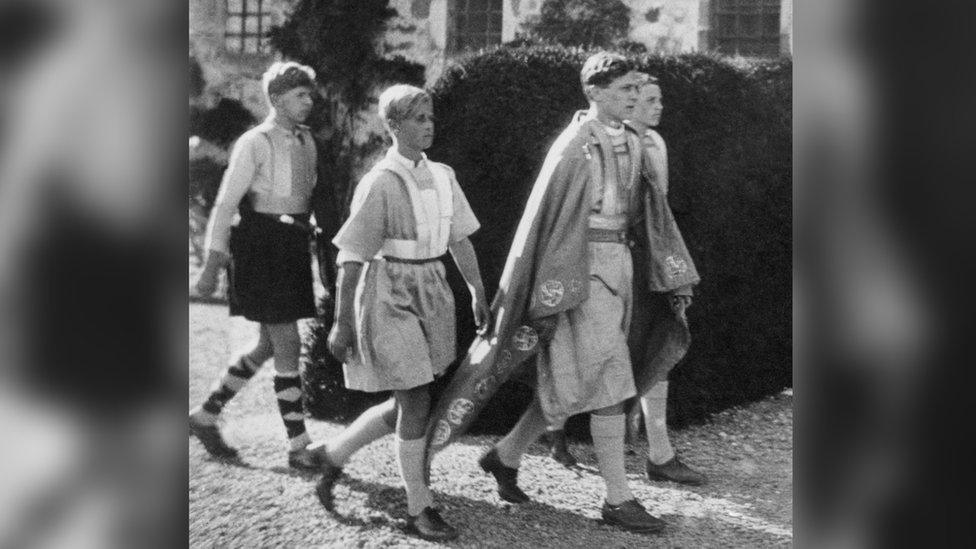
Here is a 12-year-old Prince Philip of Greece (2nd from the left) taking part in an historical pageant at school
He first met the young Princess Elizabeth at a wedding in 1934.
After school, he joined the Royal Navy as a cadet in 1939 just before World War II broke out.
Princess Elizabeth and Prince Philip wrote letters to each other during World War II while he was away serving in the Navy and their love blossomed.
Their engagement was officially announced in July 1947 and they married on 20 November 1947 - two years after the war had ended.
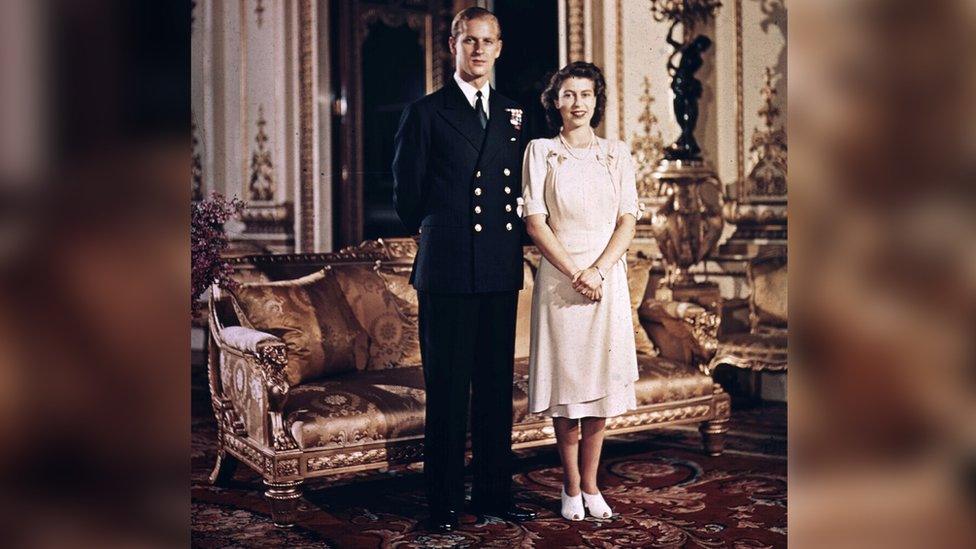
A young Prince Philip and Princess Elizabeth shortly before they got married
Huge crowds celebrated their wedding around the country.
They received more than 2,500 wedding presents from all over the world and 10,000 telegrams of congratulations.
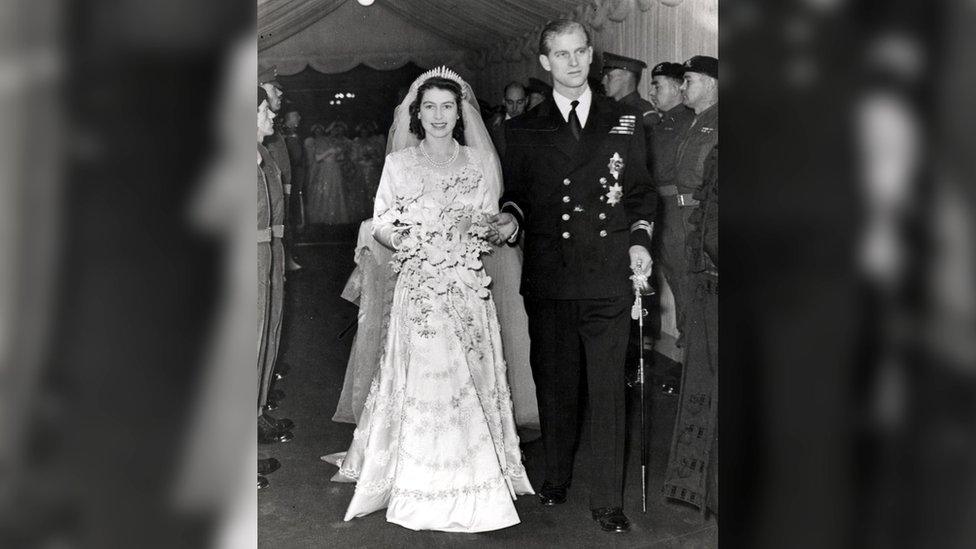
Princess Elizabeth and Prince Philip on their wedding day on 20 November 1947
His sisters were forbidden to attend, though, as they had married Germans with Nazi links.
He gave up his Greek title, became a British subject and was made Duke of Edinburgh by the King.
The couple went on to have four children: Prince Charles, Princess Anne, Prince Andrew and Prince Edward.
A British royal
Five years after their wedding, Princess Elizabeth became Queen Elizabeth II when her father, King George VI, passed away unexpectedly in February 1952.
Philip had to give up his job in the Navy and at first he found it hard to adjust to his new life.
However, he soon threw himself into his role helping the Queen but, as royal consort, he could not do any activities that had anything to do with politics.
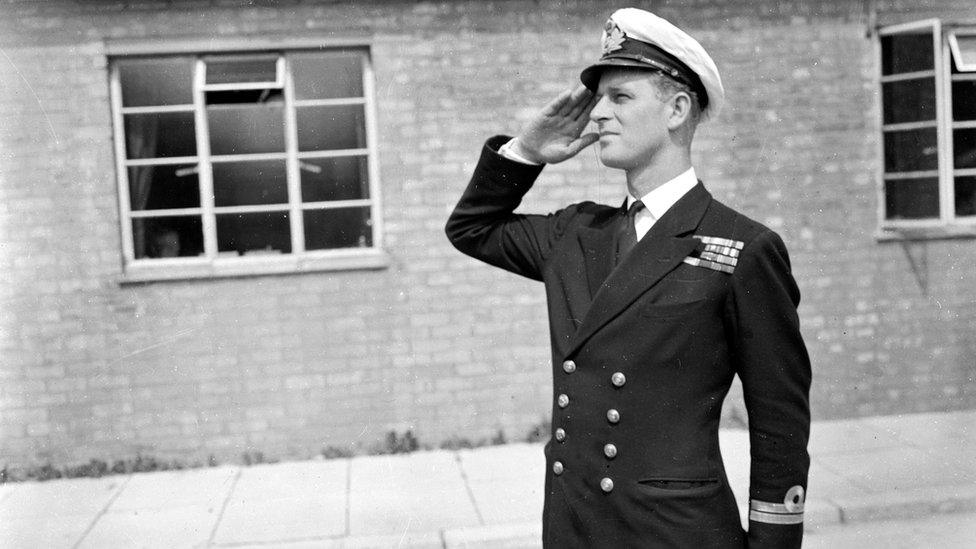
When Princess Elizabeth was crowned Queen, Philip had to give up his job in the Royal Navy
He developed interests of his own, with a particular love of the air and the sea, from his years in the Royal Navy.
He qualified as an RAF pilot in 1953, a helicopter pilot in 1956 and got a private pilot's licence in 1959.
As a keen sailor he regularly competed in the famous sailing competition, the Cowes regatta.
Prince Philip was also especially passionate about his charity work.
Prince Philip spoke to Newsround about his passion for saving wildlife
Through his years of public service, he was a patron to almost 800 different organisations.
One issue he cared about a lot was wildlife conservation - something he spoke to Newsround about back in 1986.
He was the first UK president of the World Wildlife Fund and was its international president for 15 years.
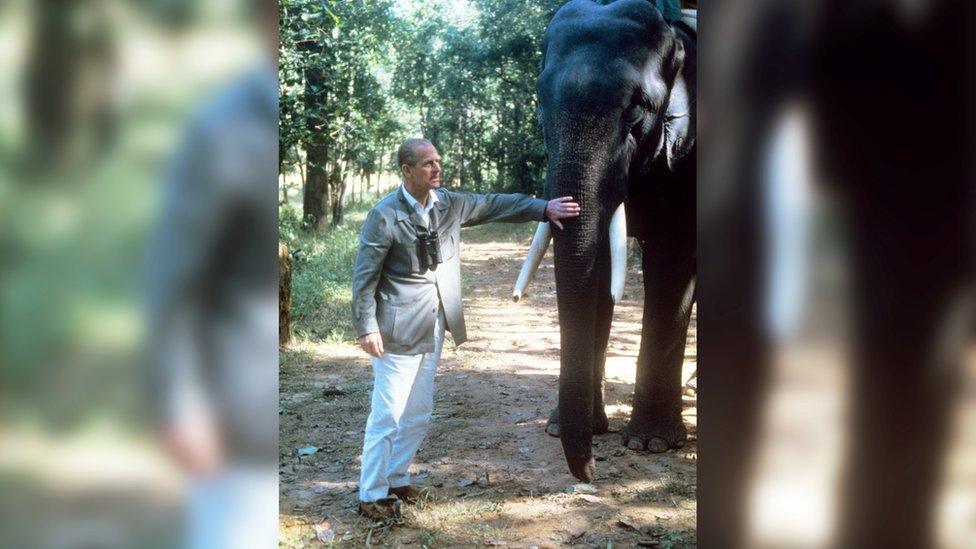
Prince Philip will be remembered for his great support for wildlife conservation
He will also be remembered for setting up the famous Duke of Edinburgh Award scheme.
The programme inspires young people to challenge themselves physically and mentally, and build their confidence, through non-academic activities outside of the classroom.
Thousands of young people across the UK get involved with the scheme every single year.
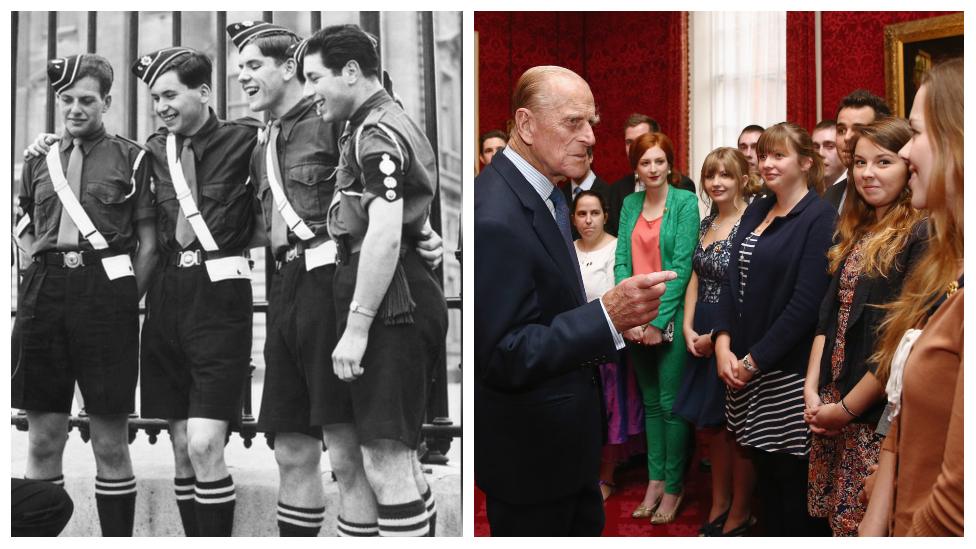
Some boys having their photo taken outside Buckingham Palace in 1960 after getting their Duke of Edinburgh Awards and a group of girls with the Duke at the 500th Anniversary Awards event in 2013.
Since it was started in 1956, it has expanded to 140 countries.
Prince Philip was also the first member of the Royal Family to be interviewed on television, as a closer relationship between the Royal Family and the media developed throughout Queen Elizabeth's reign.
Later years
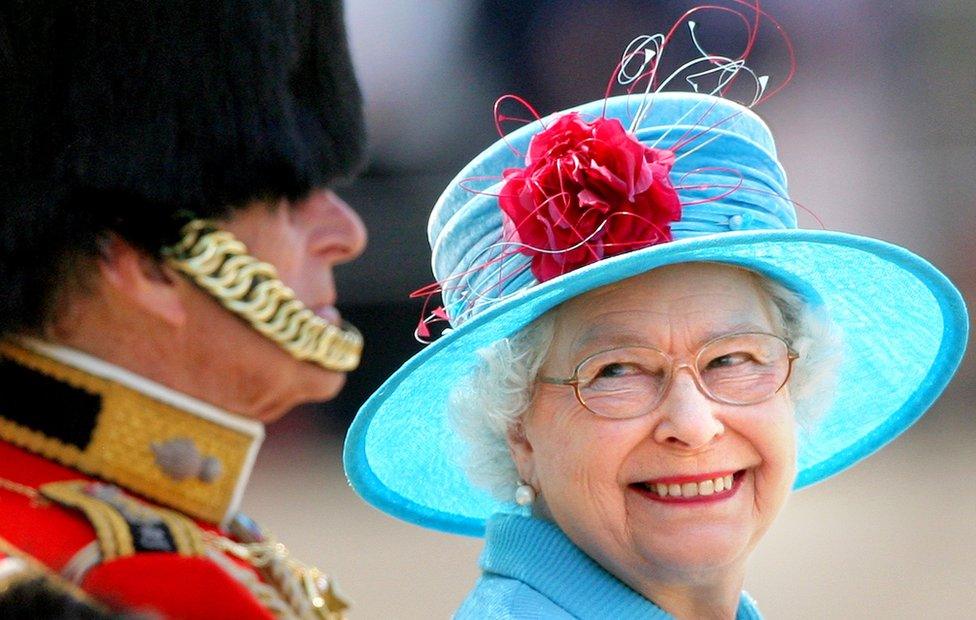
The annual Trooping the Colour parade in 2009.
In 2007, the Queen and Prince Philip became the first couple in the Royal Family to celebrate their diamond wedding anniversary (60 years of marriage).
The Queen gave a speech about her husband at the time, saying: "He has, quite simply, been my strength and stay all these years."
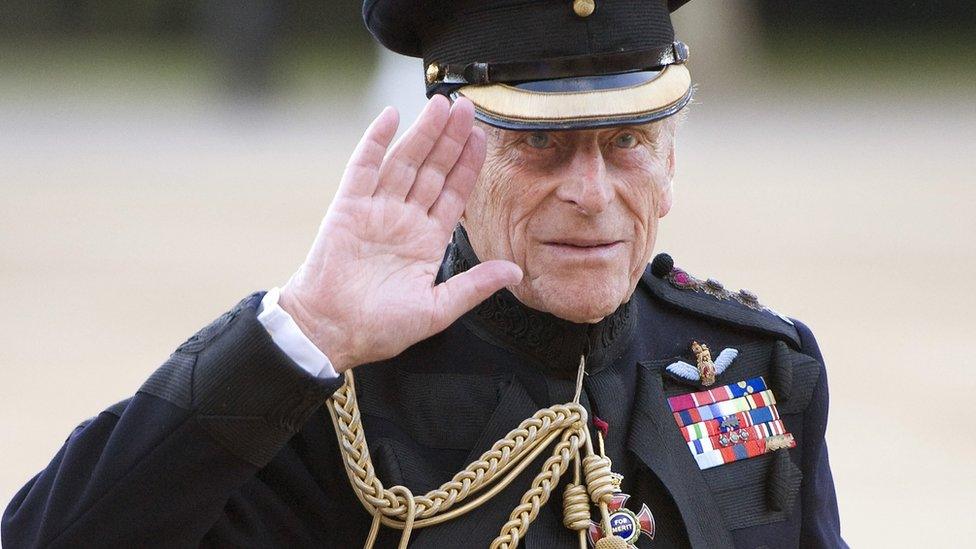
Towards the end of his life, Prince Philip took a step back from royal duties
As he got older, Prince Philip had some health problems, which forced him to miss some public events.
On his 90th birthday in 2011, he made the announcement that he would be "winding down" to seek a different balance between his royal duties and his personal life, as a husband, father, grandfather and even great-grandfather.
"I reckon I've done my bit so I want to enjoy myself a bit now, with less responsibility... less trying to think of something to say," he said.
Then, ahead of his 96th birthday in June 2017, he announced that he would be retiring from royal duties altogether.
By the time of his last duty in August 2017, Prince Philip had carried out more than 22,219 engagements on his own and more than 630 solo overseas visits.
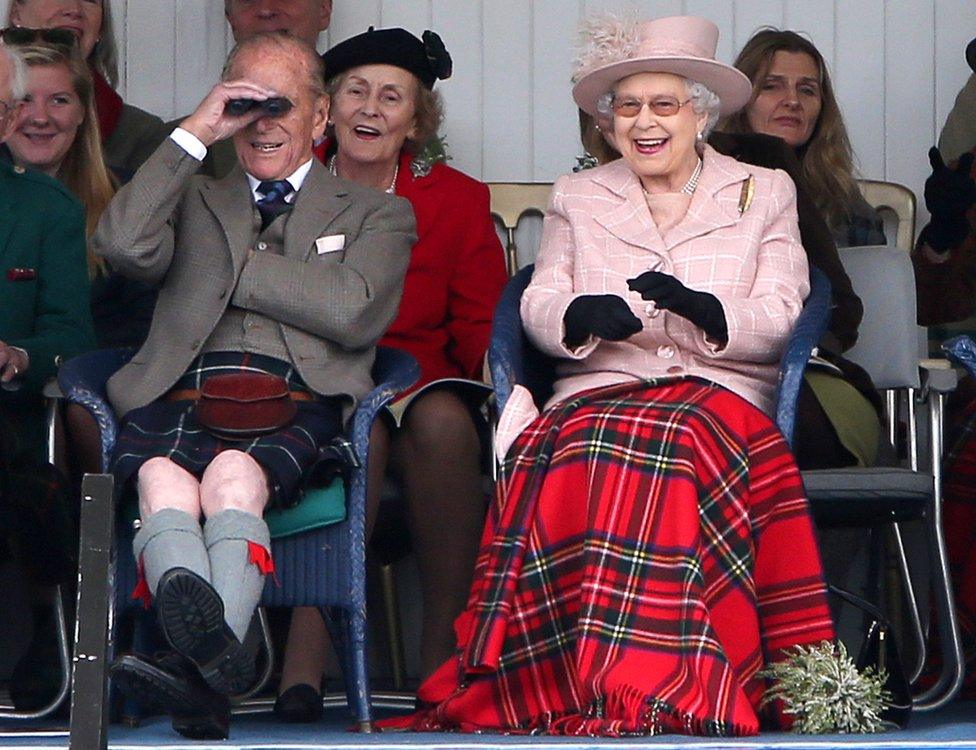
He will be remembered for standing by the Queen's side through many years of change in Britain.
He had a reputation for speaking his mind and sometimes his comments could be embarrassing.
He will also be remembered for his sense of humour.
When he announced his retirement from royal duties, mathematician Sir Michael Atiyah said to him at a lunch: "I'm sorry to hear you're standing down." Prince Philip joked back: "Well, I can't stand up much!"
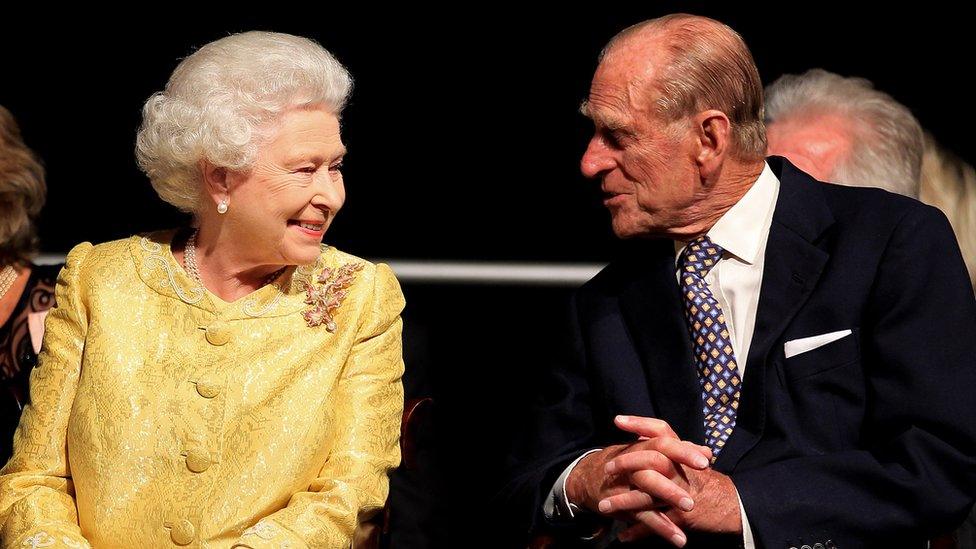
The Duke will be remembered for being the Queen's "strength and stay" throughout her long reign
He was praised by many for his dedication and his unique way of doing things.
The Queen relied on Prince Philip more than anyone else.
By supporting her - both in public and in private - many experts say he played a vital part in the success and strength of the Royal Family.
- Published29 August 2022

